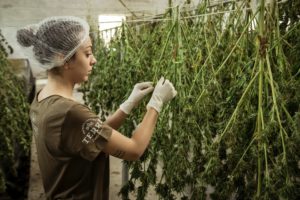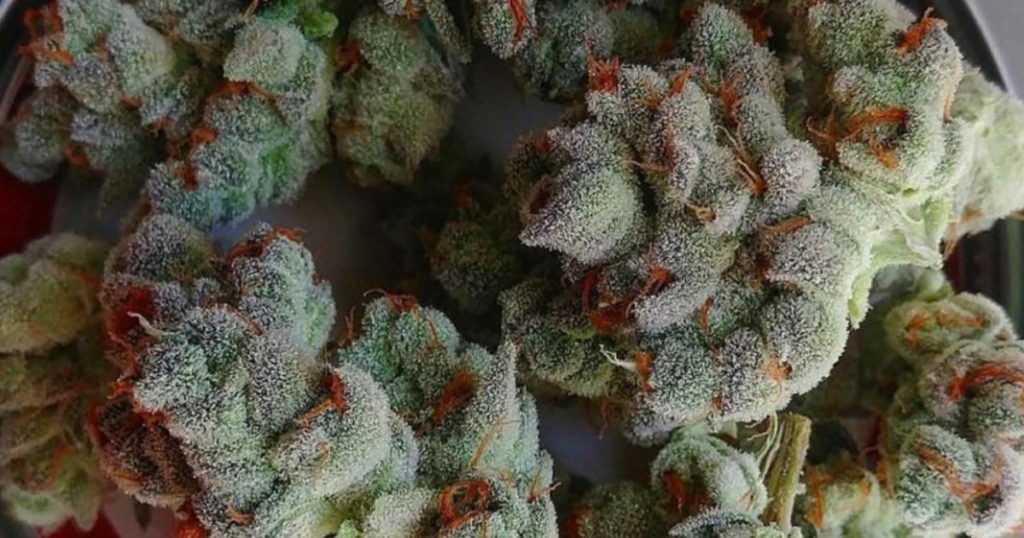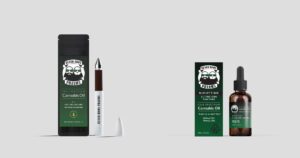We have come a long way since the days of poorly purged, crumbly, spark-shooting dabs of Butane Hash Oil (BHO), or at least, most of us have. Yeah, I’m looking at you – don’t dab that, dude.
Today, cannabis concentrates truly are the top-shelf product in any weed shop, often priced at $80-90 per gram, or more. Such a high price commands an equally high-quality hash and today’s top extract artists do not disappoint, blasting, pressing, and washing the tastiest, terpiest, and most potent dabs the world has ever seen.
Unfortunately, some retailers’ and many consumers’ knowledge about cannabis concentrates has not advanced as rapidly as extraction technology, leading to a lot of confusion at the end of the supply chain.
Earlier this month, I was in a dispensary as a custy scooping some flower when an older gent wandered in and asked the other budtender for some “good hash”.
She asked him, “Do you want Live Rosin or Badder?”
Clearly confused, he replied, “What is Rosin? What’s the difference?”
The budtender flatly ignored his first question and answered the second by saying, “One’s 90 one’s 70, the difference is the micron size.”
At this point, I am biting a hole through my tongue but I am not an employee, so I stay in my lane.
Since this fella came in wanting the good stuff, and since he apparently had the money to spend, he settled for the higher-priced Live Rosin and left with a $90 gram that he did not understand.
It got me thinking about whether the budtender was just having a bad day and didn’t feel like consulting the customer to determine his needs, or whether she just truly didn’t know what the hell she was talking about. I assume it was a bit of both.
So, considering the rising popularity of not only Live Resin but of Live Rosin as well (yep, they are two very different things!), I figured I’d bust out this breakdown of what it all means and how it is all made, hopefully steering some fellow custies and some industry “professionals” straight along the way.
LIVE HASH STARTS WITH FRESH FROZEN TERPENE PRESERVATION
Whether it was grown indoors or under the sun when a cannabis plant is harvested the farmer has a decision to make about what the very next step will be once those trees are chopped down.
 Traditionally, the branched buds are given time to dry a bit in a cool, dehumidified space. They are then bucked off the branches and passed to a trim crew where each nug is hand-manicured for quality control and bag appeal. Those trimmed buds are then jarred up and again stored in a dark, cool, dry place for weeks while they “cure” to perfection, providing a smooth, clean burn and the flavor and effects expected from the strain.
Traditionally, the branched buds are given time to dry a bit in a cool, dehumidified space. They are then bucked off the branches and passed to a trim crew where each nug is hand-manicured for quality control and bag appeal. Those trimmed buds are then jarred up and again stored in a dark, cool, dry place for weeks while they “cure” to perfection, providing a smooth, clean burn and the flavor and effects expected from the strain.
If you are looking to smoke the weed from this harvest in joints, blunts, bongs, and pipes, this is the way to handle your post-harvest process.
However, hash artisans have known for years that the best way to harvest just the heads of the trichomes is to do so under extremely cold temperatures. Whether using mechanical separation like ice/water/agitation, or whether conducting solvent-based extractions using butane or other liquified gas, yields and overall quality tend to rise as temperatures of the trichomes drop.
This realization led to a new form of harvesting the cannabis plants themselves which came to be known as “Fresh Frozen”.
When the farmer’s goal is to harvest fresh frozen flowers, it is usually because that crop has been dedicated to hash production. Nobody smokes fresh frozen flowers, but I’ll get to that shortly.
Immediately after the plants are chopped, the harvest is flash-frozen using dry ice or commercial-grade coolers. In theory, this locks in the cannabinoid content and state, as well as that of the terpenes and other constituents found inside the swollen, frozen trichomes, until the material can be processed into hash.
 We know that both cannabinoids and terpenes change or degrade over time and/or at certain temperatures. This fresh frozen method of harvesting pauses that process, leaving the trichomes and their innards “alive”.
We know that both cannabinoids and terpenes change or degrade over time and/or at certain temperatures. This fresh frozen method of harvesting pauses that process, leaving the trichomes and their innards “alive”.
Kinda like what Jabba did to Han.
Concentrates crafted from these “live” trichs have earned the title of Live Resin or Live Rosin, compared to “aged” trichomes that lead to more traditional forms of hash and dabs (ie. crumble, shatter, bubble, etc.)
Which is better, “live” or “aged”? That is quite literally a matter of taste. Both should be packed with THC and other psychoactive compounds, so you’re bound to “get high” from either.
Critics of “live” concentrates tend to complain of “racy” effects and “greener” terp profiles. They are quick to point out what I mentioned above, that nobody smokes flowers right off the branch, so trichs should be aged.
Purists, on the other hand, seem to enjoy imbibing the flavors and effects in as fresh a form as possible, convinced that the plant offers its highest and truest form under these conditions.
LIVE RESIN vs. LIVE ROSIN
You are bound to see both of these names crop up for years to come so you might as well know the difference between the two.
We already established that the “Live” portion of the product name refers to the fact that the flowers used to craft the product were harvested using fresh frozen techniques.

The difference between Resin and Rosin, when it comes to reefer, is how the trichomes from those fresh frozen flowers were processed.
Live Resin refers to a product crafted from fresh frozen cannabis flowers which are then subjected to a liquified gas solvent (most commonly butane) which then strips the cannabinoids, flavonoids, terpenes, and other pure constituents of a healthy trichome into a slurry. That mix then has the residual solvent purged out, leaving behind a tasty, potent, and safe concentrated hash.
Live Rosin, on the other hand, refers to a product crafted from fresh frozen cannabis flowers which are then subjected to a mix of ice, water, and gentle agitation. This mechanically separates the trichome heads from the stalks and the plant material, leaving various grades of ice water hash, aka Bubble Hash.
The higher grades of that sand-like, powdery hash are then collected, condensed, and squished between steel plates in a Rosin Press providing thousands of pounds of pressure, squeezing the terps and cannabinoids out of the trich heads like a super dank batch of thick, sticky orange juice. That sappy extract is Live Rosin.
Just as in the “Live” vs. “Aged” debate, there are hash aficionados that land on both sides of the “Resin” vs. “Rosin” argument. Most of the time, though, it basically comes down to whether or not that person likes to dab BHO or if they stick to a “solventless” water hash.
WHICH IS BETTER: LIVE RESIN, LIVE ROSIN, OR AGED HASH
It is easy for customers and for budtenders to assume that Live Resin or Live Rosin must be “better” than other hash options on the dispensary menu, based solely on the fact that those products tend to carry a higher price tag.
That higher price, however, is more of a reflection of the skill and experience needed to create top-quality live hash products on a commercial scale. It is very easy to render an entire batch of those products as unsafe if, for example, the added moisture from the fresh frozen material leads to the presence of mold or other impurities. Combine that with generally lower yields than you’d get when extracting dry/aged buds, and you see the real reasoning behind the premium pricing.
Going back to that fateful day in the dispensary, I reckon that explains the price difference that the old hash-head was being presented with – $90 for the Live, $70 for the Aged. I’m willing to bet that he would have been more than happy with the $70 option, or even lower, had it been explained to him properly.
Budtenders are, thankfully, getting more educated all the time. Still, would you ever go to a car dealership looking to spend top dollar only to rely solely on the advice of the salesman? Of course not. As consumers, we have an obligation to do some research of our own. After all, we are the ones dabbing and smoking the stuff, right?
(cover image: @khash_treemason)
















